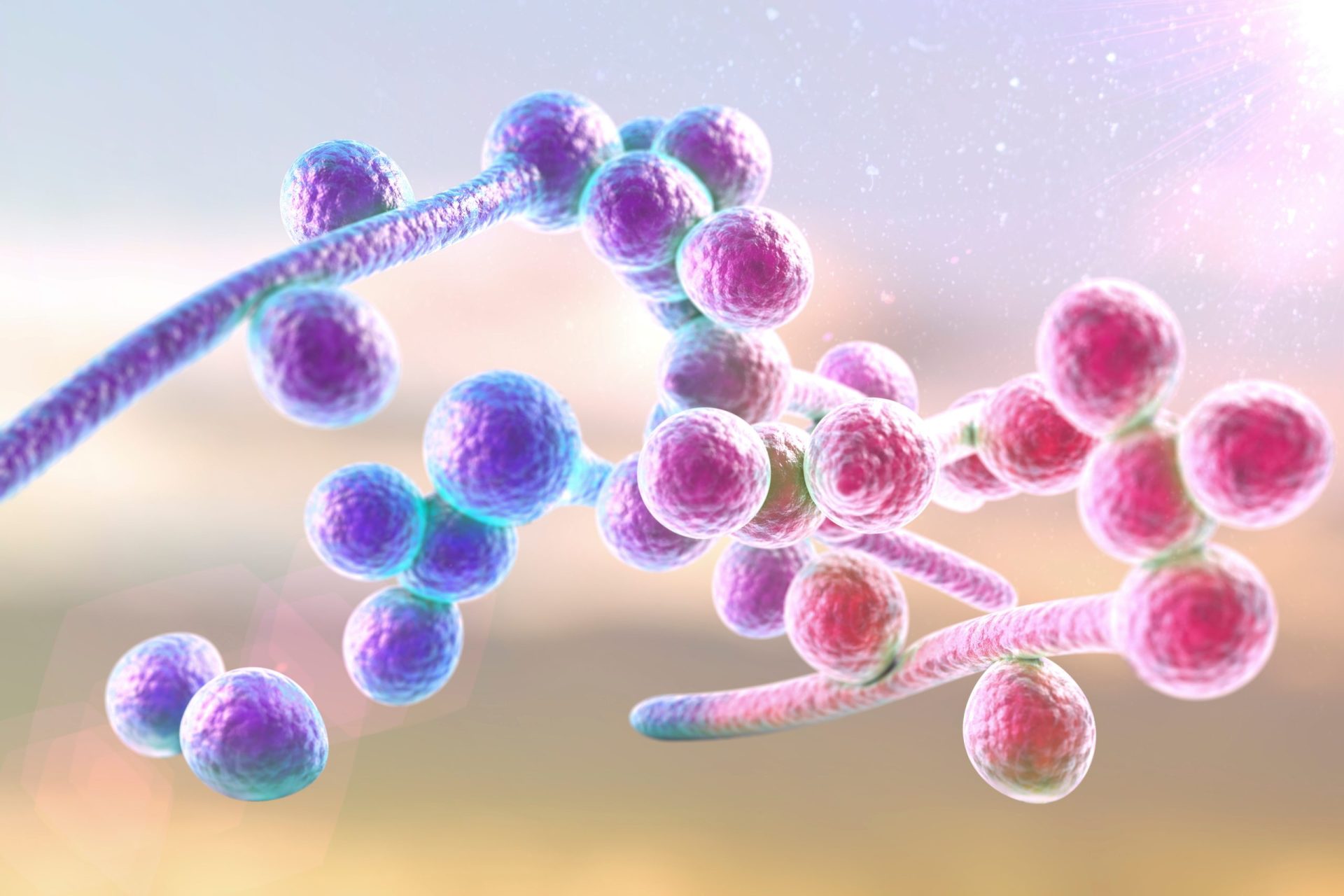
In cancer, HIV/AIDS and organ transplant patients and other individuals with lower immune efficiency, certain pathogenic fungi can be fatal. These fungi, which are at the root of common infections including invasive Candida mycoses, are all the more concerning since they’re becoming increasingly common and resistant to antifungal drugs. Indeed, the World Health Organization considers fungal pathogens to be a major threat to public health.
Adnane Sellam, professor in the Department of Microbiology, Infectious Diseases and Immunology at Université de Montréal, has focused his work on two pathogenic fungi: Candida albicans and Candida auris. Driven by bioinformatics, genomics, metabolomics and medicinal chemistry, his basic research explores the molecular mechanisms and biological processes that explain the yeasts’ ability to colonize oxygen-poor environments such as the vagina, intestines and brain.
With his team of geneticists and microbiologists, Professor Sellam has identified novel metabolic pathways involved in candidiasis and is now paving the way for the discovery of new antifungal molecules like, for example, oxyclozanide and niclosamide—two anthelmintics that unexpectedly proved to be powerful antifungal agents against susceptible and resistant strains of Candida albicans and Candida auris and whose efficacy is currently being tested in preclinical studies.
References:
Pic E, Burgain A and Sellam A (2018) Repurposing the anthelminthic salicylanilide oxyclozanide against susceptible and clinical resistant Candida albicans strains. Medical Mycology, 57(3):387-390.
Garcia C, Burgain A, Chaillot J, Pic E, Khemiri I and Sellam A (2018) A phenotypic small-molecule screen identifies halogenated salicylanilides as fungal antivirulence agents. Scientific Reports, 8: 11559
Burgain A, Pic E, Markey L, Tebbji F, Kumamouto C and Sellam A# (2019) The chromatin remodeling complex SWI/SNF control metabolic reprogramming in response to hypoxia in the pathogenic yeast Candida albicans. PLOS Pathogens. 15(12): e1007823
